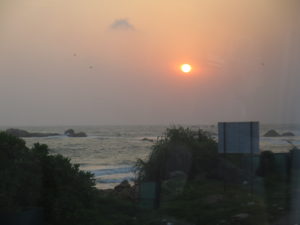From Yala to Galle along the southern coast of Sri Lanka
Sri Lanka – Along the southern coast. The stretch from Yala to Galle is almost 200 km, and a large part of the trip is open to sea, sandy beach and palm trees. There was the opportunity to taste a local specialty, which was called Curd. This is yoghurt, which is made of buffalo milk. We mixed it with a little bit of syrup.
It tasted surprisingly good.
This curd was sold at a little shop by the road, and after production it was stored in some clay vessels that could keep this curd cooled for several days. Then these clay vessels were thrown out. Strange that they could not be used for anything else.

Lunch was taken at a place where Sri Lankans also typically eat. We got nice strong fish in light puff pastry (the locals called it Fish Baked Patty) and a sandwich again with strong fish. Tasted good, overlooking the blue sea.
It was a place where there were many people – especially local – so we were in no doubt that the goods were fresh for our delicate Danish stomachs.

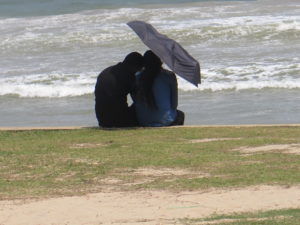
Our guide lived privately, not far from our route from Galle, so we were just inside and see this villa including the dog!

Galle. Sri Lanka – Along the southern coast.
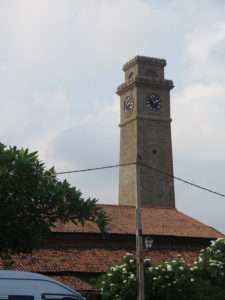
The old town of Galle was founded and fortified by the Portuguese in the early 1500s. It was conquered by the Dutch in 1640, which expanded the fortress with many bastions and finally the town was conquered by the English without a fight in the year of 1798.
Within the walls, hundreds of the old colonial and administrative buildings are preserved and the streets are perpendicularly constructed. Today, the buildings are used for shops, museums and public offices.
The city is on UNESCO’s world heritage site.
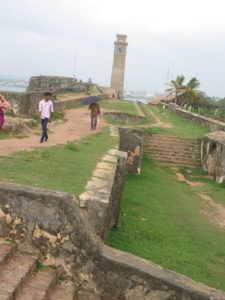
That city has been under foreign domination can be seen today:
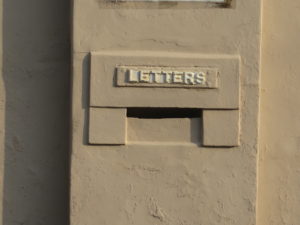
As well as road names in several languages:

Converted old administration building
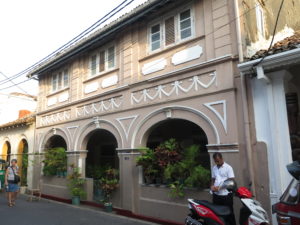
A little more English inspiration in the streets
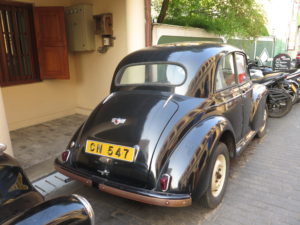
Bell Tower in Galle:
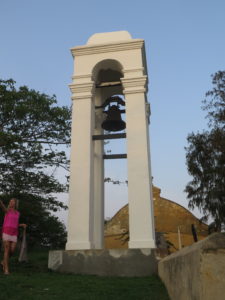
Hikkaduwa
We stayed at the hotel Kalla Bongo Lake Resort in Hikkaduwa, located 15 km north of Galle.
Our hotel was located beautifully by a lake a little inland.
There are always pros and cons of living outside a major city. Tour operators can probably get better prices such sites and better focus on site hygiene. It’s a little harder for guests impulsively to do other than swimming in a pool and sit in the bar, as it would require organizing the hire of a tuk-tuk, etc.
